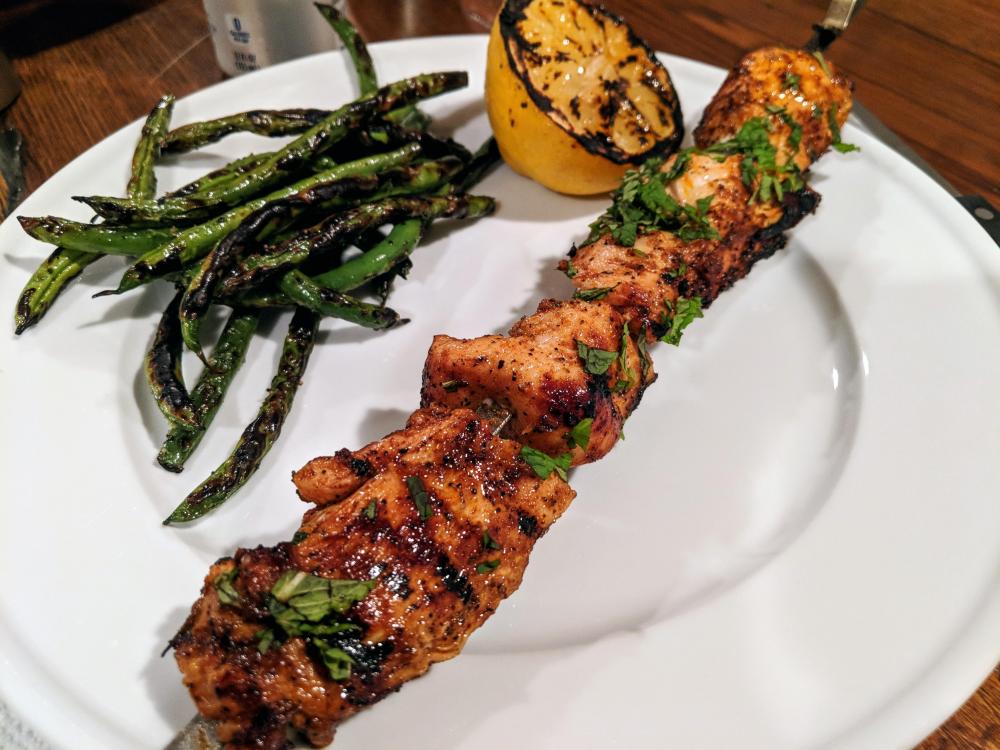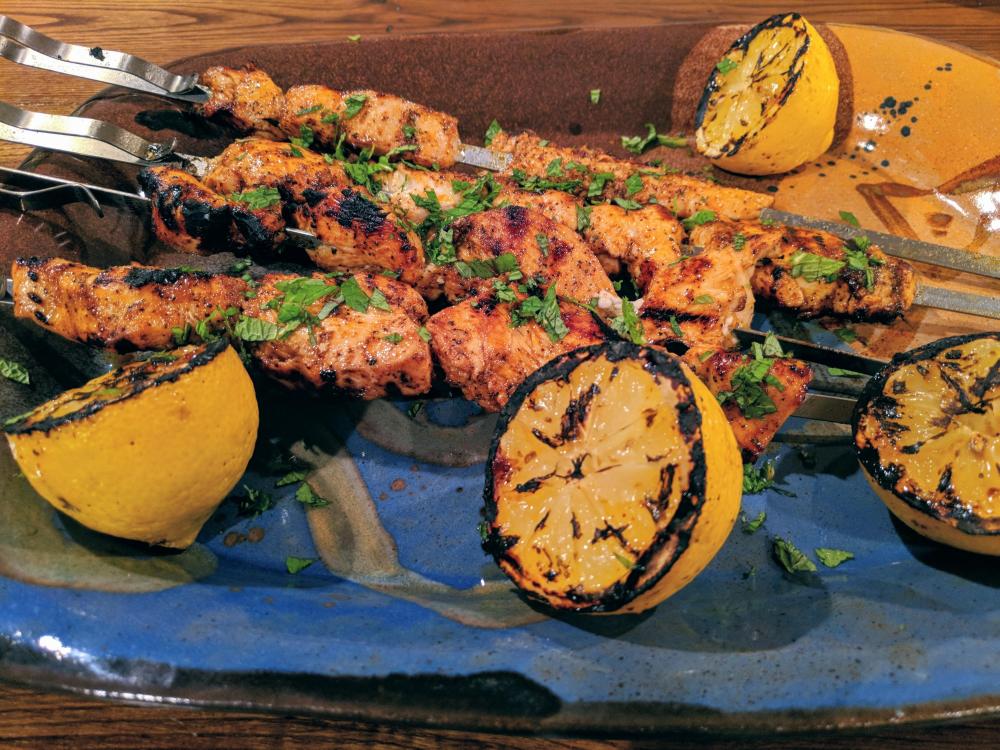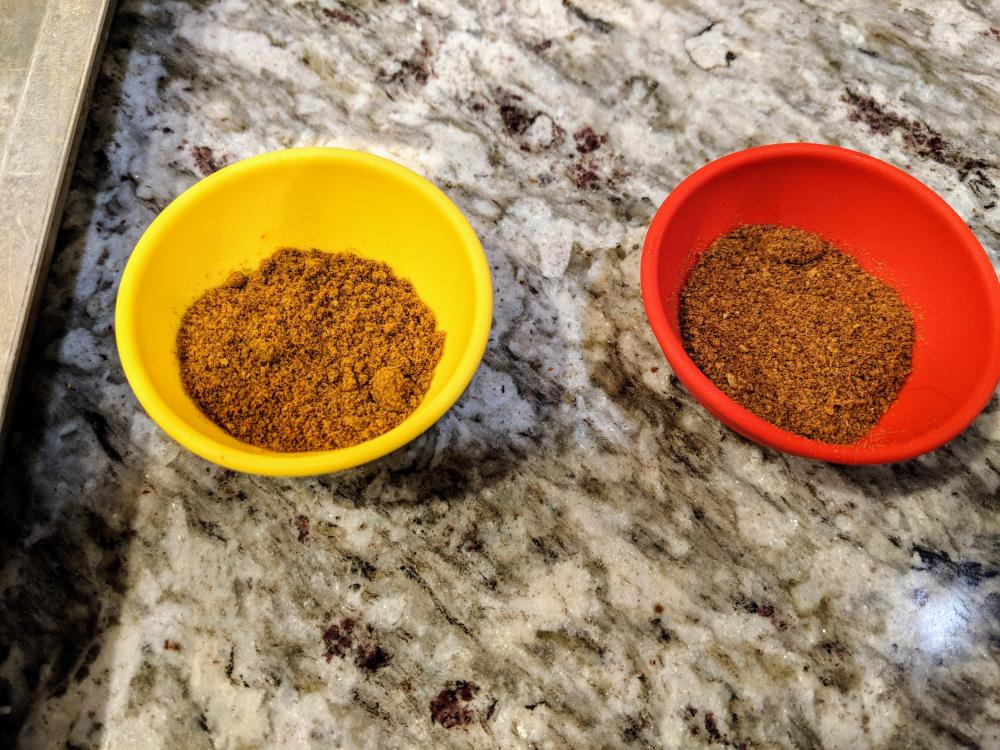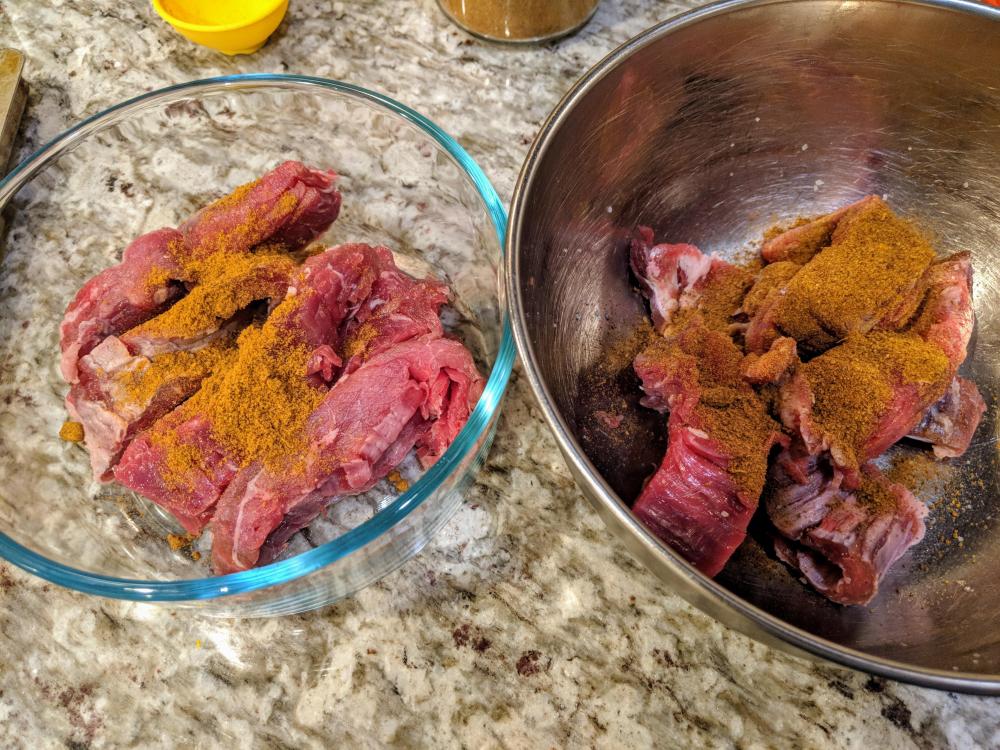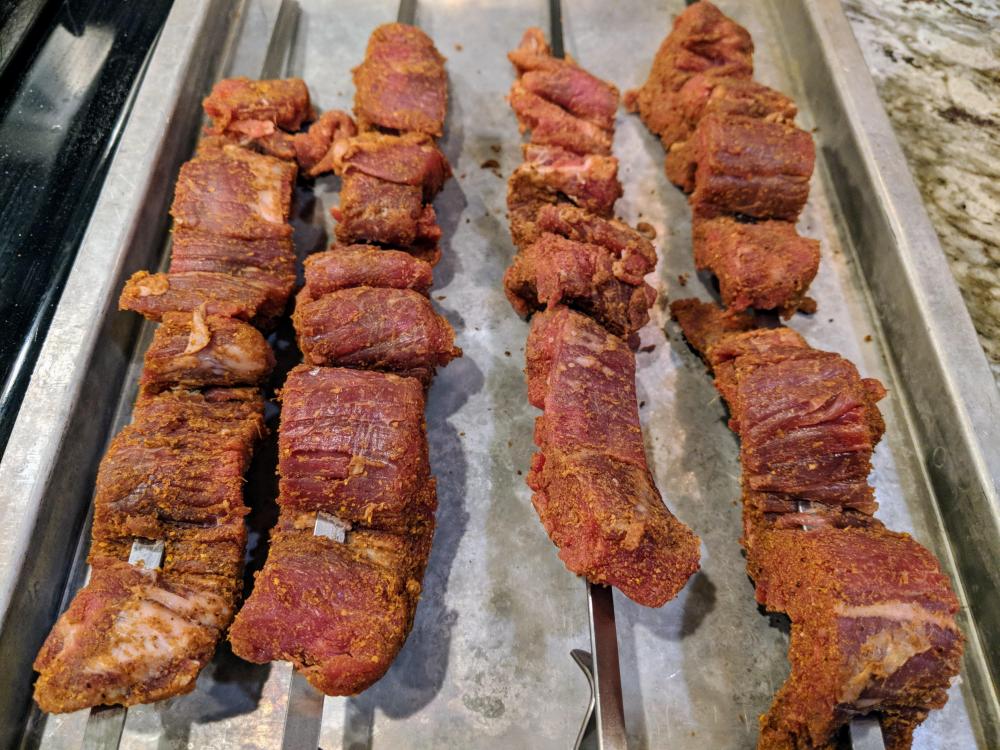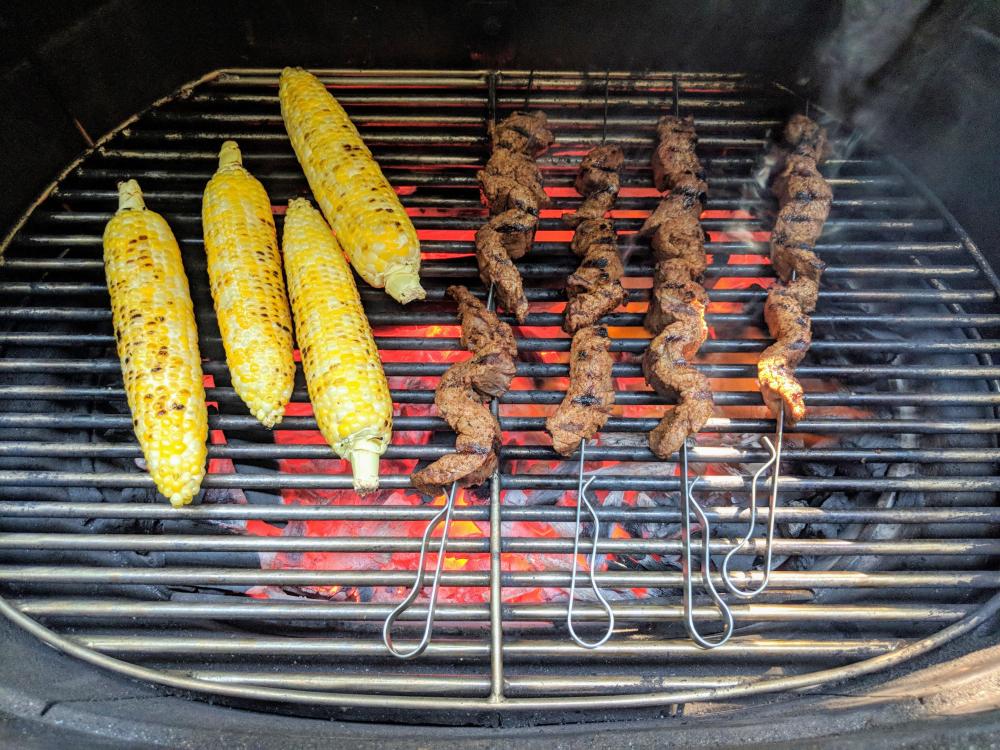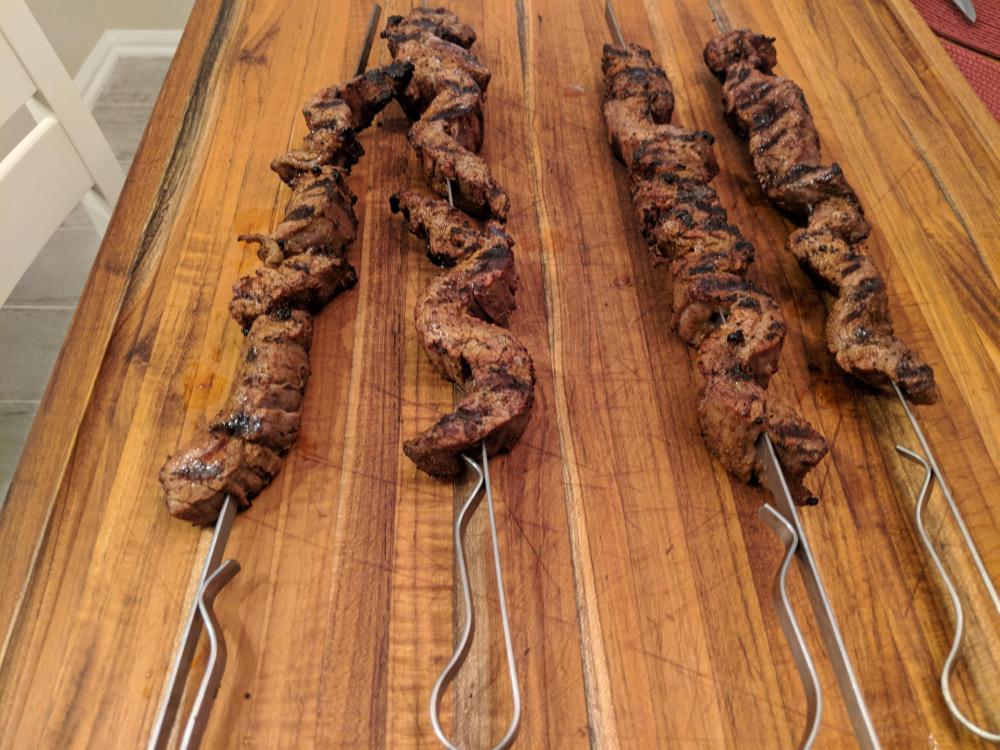-
Posts
2,682 -
Joined
-
Last visited
-
Days Won
98
Content Type
Profiles
Forums
Events
Everything posted by Pequod
-
What a crock!
-
Nope. Olive oil, season, and on the grill.
-
I found this online. Only one datapoint. https://www.sourdoughhome.com/index.php?content=groundsum https://www.sourdoughhome.com/index.php?content=mockmill
-
Used to do that too. And as long as you don’t mind storing them it works. We tend to suffer from freezer overload. Not quite sure what’s going on in there. For me, the instant pot means I’ll make stock after every chook, making smaller amounts at a time, because it’s just that easy.
-
The tray is a Weber Grill Pan. Had mine for years it’s a great accessory: https://www.lowes.com/pd/Weber-Deluxe-Grilling-Pan/1000352763 Yes on lid closed between checks. Although, when working on the sear grate like that, it’s a very quick cook, so I’m wearing high heat gloves and moving things around quite a bit. Grilled lemon adds a smoky flavor and also softens them so they are more squeezable, producing more juice. As a bonus, they look cool!
-
Another resurrection of this thread. Seems Wolfgang Mock has a new mill that grinds finer than the Komo Classic and is about half the price (if a tad less attractive). It is the Mockmill 100 (and 200). Reviews relative to the Komo Classic are favorable. Might finally do this. https://breadtopia.com/store/mockmill-100-grain-mill/
-
Yes, the difference between pellets and chips is remarkable. However, not all pellets are created equal. I tried pellets when I first got my cold smoker two year ago and found that they left an unnatural, tar-like residue. Cheap, no-name pellets. Tried pellets again earlier this year, but sought out higher quality pellets from cookinpellets.com. Worked like a charm. No going back.
-
-

Moving onto breads... and way out of my comfort zone!
Pequod replied to Chanly1983's topic in Techniques
@Chanly1983 - I shoot for the same temps as in the oven...or thereabouts. A caveat: Most Dutch Oven recipes have you start hotter and then turn the temp down 50 degrees or so. A heat soaked KK doesn’t just drop 50 degrees like that, so go with a happy medium. Say 450’ish, which is a typical temp for bread baking. -

Moving onto breads... and way out of my comfort zone!
Pequod replied to Chanly1983's topic in Techniques
Looking good! One bit of advice. Forkish claims his loaves score themselves at the natural seam, and yours did. However, this isn’t generally the case and I’ve had Forkish loaves that didn’t form a seam on their own. Hence, as you progress you will want to learn scoring with a lame. Regarding difference between KK baked and oven baked, I think the differences are more textural and visual than flavor. A CI Dutch Oven tends to create a hard crust and a dark color if you don’t watch it. The KK bread is more uniformly brown and a crust that’s a bit less dense. Both are good. I prefer the KK baked breads. -

Moving onto breads... and way out of my comfort zone!
Pequod replied to Chanly1983's topic in Techniques
@Chanly1983 - sage advice from @Syzygies above. Just do it! -

Moving onto breads... and way out of my comfort zone!
Pequod replied to Chanly1983's topic in Techniques
Learning bread can seem like torture at times! Interestingly, one of the longest threads in the Pit at Amazing Ribs has nothing to do with meat at all. It is all about sourdough bread. The good news is that books like "Tartine Bread" and "Flour, Water, Salt, Yeast" shortcut the learning process considerably. The latter is really just an extension of the former -- Forkish simplifies the Tartine Bread process into something more accessible. For even more good info, there are some helpful videos and other resources at Stella Culinary: https://stellaculinary.com/cooking-videos/stella-bread/sb-004-how-make-basic-loaf-sourdough-bread -
I’m pretty sure this is a prerequisite of becoming a KK owner.
-
I love homemade stock and used to do it all the time, but stopped because the all day simmer method is...time consuming. This is where the Instant Pot has come to the rescue. Same ingredients, but one hour under pressure and I’m back in the stock game! Great use for roti chicken carcasses.
-
We would both rank these as: 1) Nigerian, 2) Bazaar (close second), 3) Milk Street. Not that the Milk Street version was bad by any means. I quite liked it. It’s a reasonable approximation of the real thing with readily available ingredients. However, there is a certain je ne sais quoi in the other versions. The real epiphany for me is that I have a spice shop nearby that sells high quality, authentic blends using the correct ingredients, not just approximations.
-

Moving onto breads... and way out of my comfort zone!
Pequod replied to Chanly1983's topic in Techniques
No shame in an oven bake. Especially to get started with new techniques, best to start with the way the recipe is written first to get the feel for the process and the finished product. I haven’t tried the Baking Steel yet for bread. My concern with the steel for bread is the impact of the high initial heat transfer on a long bake. I feel like it would result in a bottom that’s considerably darker than the top. Dennis’ stone, on the other hand, is ideal for achieving uniformly browned breads. I guess my answer is: don’t do it until you have more bread notches under your belt. For the steam oven technique: I use two spools of chain in a large (16-17”) cast iron skillet. I deposit ~400g of ice into that as a single sheet frozen in a 1 quart zip lock laying flat. -
Wow! Wing sauce as a pork mop. Pigs really do fly! Interesting idea. There are some Old Virginia, vinegar based sauces for pork that aren’t far off from a wing sauce. I can see how that would work very well.
-

Moving onto breads... and way out of my comfort zone!
Pequod replied to Chanly1983's topic in Techniques
Don’t know that book, but any of Forkish’s breads can be baked without a Dutch Oven. The purpose of the Dutch Oven is to trap the steam released by the moisture of the dough, creating the rough equivalent of a steam oven. Or that’s the conventional wisdom anyway. I suspect there’s more going on than that in terms of heat transfer. There are many ways to bake bread on a KK. One is to go naked on the baking stone. Another is to use an inverted, preheated Dutch Oven or stainless steel bowl to trap the steam. Another is Syzygies steam oven technique. The results between the three may vary, but they all can give you good bread. An experiment I’ve always meant to try, but haven’t, is to make two loaves of whatever Forkish bread you choose, baking both on the KK baking stone, but with one covered by a preheated stainless steel bowl for the first 20 minutes. -
This is a Tale of Two Suyas. It was the best of cooks, it was the worst of cooks... For this cook, I wanted to compare the Nigerian original by way of @tekobo with the Suya Spice sold by Bazaar Spices in nearby Washington, DC. My original plan was to compare these with the version by Milk Street, but the pinky test suggested these were very similar to each other and nothing like the Milk Street version (good in its own right, but different). The Nigerian version is on the left and Bazaar version on the right. After dry brining strips of flank steak for an hour, I divided in half. That’s 12 oz of steak in each bowl. The one on the left is rubbed with 1.5 Tbsp of Nigerian spice, and on the right is the same amount of Bazaar. Onto the skewers: Onto the sear grate of the 32 with some ears of corn: Resting on the cutting board. Bazaar version on the left, Nigerian on the right. I had shakers on the table of each for extra spice on the plate. My daughter the food critic gave me her opinion, which matched my own. The underlying flavors of each are the same, but the Nigerian version has a bit more heat. Both are very different from the Milk Street version. We agreed that the Bazaar version could easily be tailored by adding cayenne. Finally, she said to me: It is a far, far better thing that I eat, than I have ever done; it is a far, far better plate that I go to than I have ever known. (apologies to Charles Dickens )
-
Love this recipe. Need to do it again soon.
-
Sorry to hear about the humptying of your egg. This is much better. You won't regret it.
-
Reminds me of my corn “dealer” back in Shampoo-Banana Illinois. He preferred payment in small, unmarked bills. Could never figure out why...
-
I own both a 23 and a 32. The 32 is the better grill regardless of your family size. There. I said it. The 23 is great too, but the 32 is just plain better. It is a true two-zone grill (the 23 isn’t), has more capacity, etc. I love them both, but if forced to choose one, it’s not even close. 32 hands down. Only thing better is a 32 in pebble.
-
I’m looking forward to my next trip to Dallas. I’ll be looking for “funky brisket” on the menu at my favorite BBQ joint. If not listed, I’ll ask for it. Look forward to seeing what I get.
-

Mistakes when making a pan pizza.
Pequod replied to ckreef's topic in Bread, Pizza, Pastries or Desserts
Here’s one source: https://www.cooksinfo.com/italian-flours. According to this, our All Purpose and Bread flours are closer to Italian type 0. And then there’s this: http://nybakers.com/index.php?main_page=index&cPath=9_15. Based on ash content, it seems type 1 is more consistent with French type 65 or 85. And this: http://www.theartisan.net/flour_classification_of.htm. Italian type 1 doesn’t seem to be something we’d find the equivalent of in the wild. More of a specialty flour, but type 65 at NY Bakers would be close.






